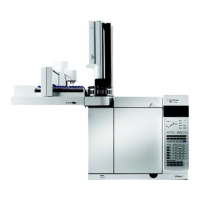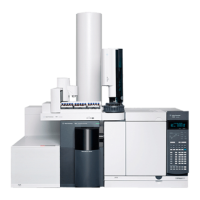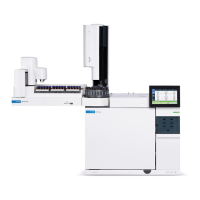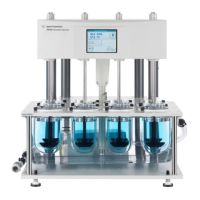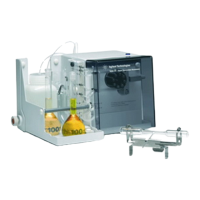106 Advanced Operation Manual
3 Inlets
For most applications of cold splitless, a single temperature
ramp is enough. The remaining ramps can be used to clean
the liner or to decrease the inlet temperature to prepare for
the next injection.
Hot splitless introduction
For hot splitless introduction, select an initial temperature
high enough to volatilize the analytes. No additional
temperature parameters are required as the inlet will
maintain the setpoint throughout the run.
Because of the small liner volume (about 120 μL), the PTV
cannot contain vapor resulting from large liquid injection
volumes. Injection volumes greater than 1 μL may overflow
vapor from the inlet, causing analysis variations. Cold
splitless introduction avoids this problem.
Starting values
A successful splitless injection consists of these steps:
1 Inject the sample and temperature program the inlet to
vaporize it.
2 Use a low column flow and low oven temperature to
create a solvent- saturated zone at the head of the
column.
3 Use this zone to trap and reconcentrate the sample at the
head of the column.
4 Wait until all, or at least most, of the sample has
transferred to the column. Then discard the remaining
vapor in the inlet—which is mostly solvent—by opening a
purge valve. This eliminates the long solvent tail that this
vapor would otherwise cause.
5 Raise the oven temperature to analyze the sample.
Some experimentation is needed to refine the operating
conditions. Table 21
provides starting values for the critical
parameters.
Tabl e 21 Splitless mode inlet parameters
Parameter Allowed setpoint range Suggested starting
value
Oven temperature No cryo, ambient+10 °C to 450 °C
CO
2
cryo, –60 °C to 450 °C
N
2
cryo, –80 °C to 450 °C
10 °C below solvent
boiling point

